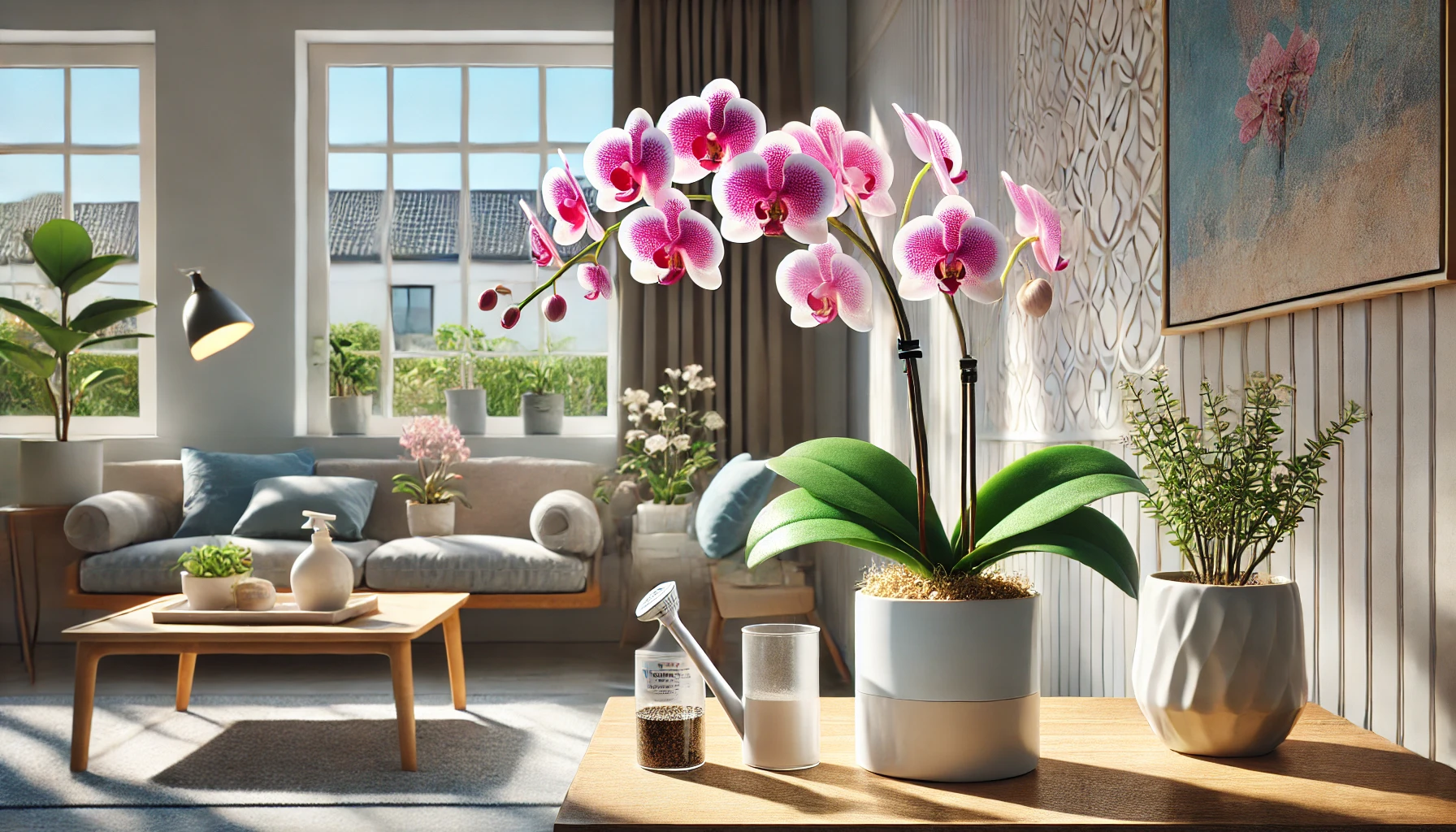Orchids are among the most beautiful and exotic flowers, making them a popular choice for home gardening. However, their delicate nature often leaves beginners feeling unsure about how to properly care for them. The good news is that with the right knowledge, you can keep your orchids thriving and blooming for years.
In this guide, we will cover everything you need to know about caring for orchids at home, including light, watering, fertilization, repotting, and troubleshooting common issues.
Choosing the Right Orchid for Your Home
There are over 25,000 species of orchids, but some are easier to care for than others. If you’re a beginner, consider starting with these low-maintenance orchid varieties:
- Phalaenopsis (Moth Orchid) – One of the easiest orchids to grow indoors, blooms last for months.
- Dendrobium – Thrives in bright, indirect light and has a long blooming period.
- Oncidium (Dancing Lady Orchid) – Prefers bright light and produces stunning yellow flowers.
- Cattleya – Requires slightly more care but rewards you with large, fragrant flowers.
Best Placement for Orchids in Your Home
Orchids need the right environment to thrive. Here’s how to find the best spot for your plant:
- Light: Place your orchid in bright, indirect sunlight. A north or east-facing window is ideal. Direct sunlight can burn the leaves, so if your only option is a south-facing window, use a sheer curtain for protection.
- Temperature: Most orchids prefer temperatures between 65–75°F (18–24°C) during the day and a slight drop at night. Avoid placing them near air conditioners, heaters, or vents.
- Humidity: Orchids love humidity! Keep the humidity level between 50–70%. If your home is dry, place a humidity tray (a shallow tray filled with water and pebbles) under the plant.
Watering Orchids the Right Way
Overwatering is one of the most common mistakes new orchid owners make. Here’s how to do it correctly:
- Water once a week in winter and twice a week in summer.
- Use room-temperature water to avoid shocking the roots.
- Water in the morning so excess moisture can evaporate during the day.
- Never let the roots sit in standing water—always ensure the pot has good drainage.
- Check moisture levels by sticking your finger or a wooden skewer into the soil. If it feels dry, it’s time to water.
The Ice Cube Method: Is It Safe?
Many people suggest watering orchids with ice cubes, but this method is not ideal. Orchids are tropical plants that don’t encounter ice in nature. Instead, use lukewarm water and water thoroughly.
Fertilizing Your Orchid for Healthy Growth
Orchids need nutrients to bloom and stay healthy. Use a balanced orchid fertilizer (20-20-20) and follow these tips:
- Fertilize every two weeks when the plant is actively growing.
- Dilute the fertilizer to half strength to avoid burning the roots.
- Reduce fertilization during dormancy, when the orchid is not producing flowers.
Repotting Your Orchid
Orchids should be repotted every 1–2 years, or when the growing medium breaks down. Here’s how:
- Choose a new pot that is slightly larger than the current one and has good drainage.
- Use a special orchid mix, such as bark or sphagnum moss, instead of regular potting soil.
- Gently remove the orchid from its current pot, shaking off old potting material.
- Trim dead or rotting roots with sterilized scissors.
- Place the orchid in the new pot, filling in with fresh orchid mix.
- Water lightly and allow the plant to adjust to its new home.
Common Orchid Problems and How to Fix Them
Even with the best care, orchids can develop problems. Here’s how to diagnose and fix them:
| Problem | Cause | Solution |
|---|---|---|
| Yellow leaves | Overwatering or too much sun | Adjust watering and move to indirect light |
| Wrinkled leaves | Underwatering or low humidity | Water more often and increase humidity |
| No flowers | Not enough light or nutrients | Move to a brighter spot and fertilize |
| Brown/black spots | Fungal or bacterial infection | Remove affected areas and improve airflow |
| Drooping flowers | Aging blooms or underwatering | If natural, let them fall; otherwise, increase watering |
Encouraging Your Orchid to Bloom Again
If your orchid has stopped blooming, don’t worry! Here’s how to encourage new flowers:
- Give it the right amount of light – At least 6 hours of bright, indirect light per day.
- Mimic its natural temperature cycle – Orchids bloom when they experience a slight temperature drop at night (around 10°F or 5°C lower than daytime temperatures).
- Trim the flower spike correctly – If the stem is still green, cut just above a node to encourage a new bloom. If it’s brown and dry, trim it at the base.
- Be patient – Some orchids take months to rebloom, so keep caring for them!
Final Thoughts
Caring for orchids at home may seem challenging at first, but with the right approach, it becomes a rewarding and enjoyable experience. By providing the right light, water, humidity, and nutrients, you can keep your orchids healthy and encourage them to bloom year after year.
If you follow these tips, your orchids will not only survive—they will thrive! 🌸
